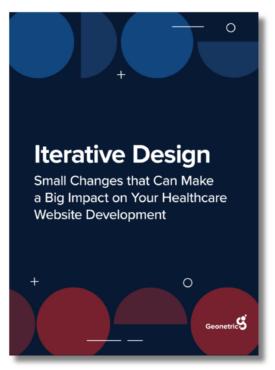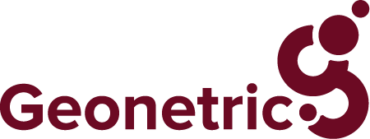Your healthcare organization’s website is often the first interaction patients have with your brand. If it’s been a while since you’ve taken on a healthcare website development project like a refresh or redesign, it’s time to consider whether your current site is helping you make progress on your marketing goals or holding you back.
A well-designed website can enhance patient experiences, improve search visibility, and drive engagement — all necessary stepping stones on the path to growing your organization. But an outdated, hard-to-navigate site can frustrate visitors, sending them to your competition for care.
To ensure your website meets the needs of both users and your organization, follow these best practices for healthcare website development.
1. Create easy-to-follow user pathways
A well-structured website guides users through key actions, such as scheduling an appointment, finding a provider, or accessing information about your service lines. Your first step to ensuring your redesigned website is easy to navigate should be mapping out common user journeys to see where they may be hitting roadblocks and ensuring your new design eliminates them.
Use clear calls-to-action, logical navigation structures, and streamlined appointment booking processes to reduce the steps users need to take to accomplish their goals on your website, reducing confusion and improving engagement across the board.
2. Incorporate SEO into your content strategy
Healthcare website development isn’t just about design — it’s also about ensuring patients can find your site. Search engine optimization (SEO) should be a foundational component of your content strategy.
Optimize page titles, meta descriptions, and headers with relevant keywords, and implement Schema structured data to enhance search engine visibility.
Once your site launches, regularly publish high-quality, informative content that addresses patient questions and health concerns to improve rankings and attract more visitors.
3. Utilize user experience testing
Your new website should be intuitive and easy to navigate. Conducting user experience (UX) testing allows you to identify friction points and optimize your site for a seamless experience.
Testing elements like page layouts, navigation menus, and calls-to-action helps ensure patients can easily find the information they need. Regular UX testing also allows you to iterate and refine the site based on real user feedback.
4. Build out robust location and provider profiles
Patients often search for care based on location and provider specialties, so ensuring your site has detailed and up-to-date location and provider profiles is crucial. Include essential information such as addresses, maps, contact details, accepted insurance, and specialties, and use structured data to enhance these profiles in search results.
You can take it a step further by including content like virtual facility tours, video provider introductions, care team Q&As, patient reviews, and more to establish trust in your brand and your team. By making it easier for patients to find and contact providers, you can improve both patient satisfaction and appointment conversion rates.
5. Keep accessibility in mind
Web accessibility ensures that all users, including those with disabilities, can easily navigate your site. Implement features during your healthcare website development process such as text alternatives for images, keyboard-friendly navigation, and high-contrast text options. Compliance with WCAG (Web Content Accessibility Guidelines) not only improves usability but also ensures legal compliance and enhances the overall patient experience.
6. Strengthen trust with social truth
Your healthcare website redesign is the perfect time to reassess how your organization gathers and shares social proof, like patient reviews and testimonials.
If your current site doesn’t have a space dedicated to sharing these stories, consider creating one and linking it prominently on your homepage or navigation menu, so prospective patients know where to go to hear firsthand accounts of the care your organization provides.
7. Choose a CMS or DXP to support your organization’s growth
The right content management system (CMS) or digital experience platform (DXP) can streamline website management and enhance digital experiences. When selecting a CMS or DXP, look for one that allows easy content updates, integrates with third-party tools, and supports personalization to meet evolving patient expectations.
Platforms designed specifically for healthcare organizations, like our VitalSite® CMS, offer flexibility, scalability, and healthcare-specific features. A DXP like Optimizely One for Healthcare can take those benefits a step further, with tools to manage your complete content cycle, as well as personalization and optimization efforts, across channels and multiple websites.
A well-developed healthcare website is a vital asset for engaging patients and enhancing your organization’s digital presence. By prioritizing user experience, optimizing for search engines, ensuring accessibility, and selecting the right technology, you can build a site that meets patient needs while supporting your organization’s long-term growth.
If your healthcare website isn’t performing at its best, it’s time to partner with Geonetric. Our team of developers, SEO experts, designers, and content pros have years of healthcare website development experience working with hospitals, health systems, and other organizations across the country.
Check out a few of our award-winning website redesigns here, or learn more about our healthcare website development services. When you’re ready to embark on your own healthcare website redesign, contact our team to get started!











